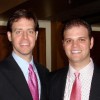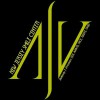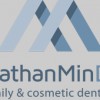We hope you and your family in good health. Our community has been through a lot over the last few months, and all of us are looking forward to resuming our normal habits and routines. While many things have changed, one thing has remained the same: our commitment to you. As we help you create your best smile, a clean, safe environment has always been a top priority for our practice and you may have seen this during your visits to our office.
Our office follows infection control recommendations made by the American Dental Association (ADA), The U.S. Centers for Disease Control and Prevention (CDC) and the Occupational Safety and Health Administration (OSHA). We follow the activities of these agencies to make sure that our infection control procedures are current and adhere to each agencies' recommendations.
You will see some changes when it is time for your next appointment. We made these changes to help protect our patients and staff as well as to make sure we are following mandates from the State of New Jersey.
Our office follows infection control recommendations made by the American Dental Association (ADA), The U.S. Centers for Disease Control and Prevention (CDC) and the Occupational Safety and Health Administration (OSHA). We follow the activities of these agencies to make sure that our infection control procedures are current and adhere to each agencies' recommendations.
You will see some changes when it is time for your next appointment. We made these changes to help protect our patients and staff as well as to make sure we are following mandates from the State of New Jersey.
Services
Orthodontics is the branch of dentistry that corrects teeth and jaws that are positioned improperly.
Crooked teeth and teeth that do not fit together correctly are harder to keep clean, are at risk of being lost early due to tooth decay and periodontal disease, and cause extra stress on the chewing muscles that can lead to headaches, TMJ syndrome and neck, shoulder and back pain.
Teeth that are crooked or not in the right place can also detract from one's appearance.
For most people, achieving a healthy, beautiful smile is the main reason for orthodontic treatment.
Crooked teeth and teeth that do not fit together correctly are harder to keep clean, are at risk of being lost early due to tooth decay and periodontal disease, and cause extra stress on the chewing muscles that can lead to headaches, TMJ syndrome and neck, shoulder and back pain.
Teeth that are crooked or not in the right place can also detract from one's appearance.
For most people, achieving a healthy, beautiful smile is the main reason for orthodontic treatment.
Braces are the most common fixed appliances used to correct teeth.
Braces consist of bands, wires and/or brackets.
Bands are fixed around the teeth or tooth and used as anchors for the appliance, while brackets are most often bonded to the front of the tooth.
Arch wires are passed through the brackets and attached to the bands.
Tightening the arch wire puts tension on the teeth, gradually moving them to their proper position.
Braces are usually adjusted monthly to bring about the desired results, which may be achieved within a few months to a few years.
Braces consist of bands, wires and/or brackets.
Bands are fixed around the teeth or tooth and used as anchors for the appliance, while brackets are most often bonded to the front of the tooth.
Arch wires are passed through the brackets and attached to the bands.
Tightening the arch wire puts tension on the teeth, gradually moving them to their proper position.
Braces are usually adjusted monthly to bring about the desired results, which may be achieved within a few months to a few years.
Dr. Olcay offers a variety of orthodontic appliances that accompany traditional treatments to straighten the teeth or correct over- or under-bites.
Some of them can be used by themselves or in conjunction with braces to address a number of orthodontic issues.
Headgear is useful in correcting overbites.
It is made of a strap that goes around the neck, fixed to a facebow that's typically attached to the mouth / molar.
Headgear is usually worn at home only.
Rubber bands, or elastics, work hand in hand with braces.
Some of them can be used by themselves or in conjunction with braces to address a number of orthodontic issues.
Headgear is useful in correcting overbites.
It is made of a strap that goes around the neck, fixed to a facebow that's typically attached to the mouth / molar.
Headgear is usually worn at home only.
Rubber bands, or elastics, work hand in hand with braces.
You may be somewhat familiar with how the Invisalign treatment works, but we'd like to take you through each step of the treatment process, from consultation to confident smile.
Whether you're considering treatment for yourself or someone else, knowing more about the entire process can help you be more confident in your decision to choose Invisalign and enjoy a better smile every day.
Choosing the right doctor and the right treatment plan is so essential, because not all dentists and orthodontists work with Invisalign.
Whether you're considering treatment for yourself or someone else, knowing more about the entire process can help you be more confident in your decision to choose Invisalign and enjoy a better smile every day.
Choosing the right doctor and the right treatment plan is so essential, because not all dentists and orthodontists work with Invisalign.
Now that your braces are off, it is necessary for you to wear retainer(s) in order to keep your teeth in their new positions.
I recommend full time (24/7) wear for the first year.
You take them out only to eat and brush and when you play contact sports or swim.
Also, do not chew gum with retainers in the mouth.
After the first year, you will continue to wear the retainers at night, indefinitely.
If you do not wear your retainers as instructed, the teeth may relapse back to their original positions, and this could necessitate more costly treatment such as putting the braces back on again.
I recommend full time (24/7) wear for the first year.
You take them out only to eat and brush and when you play contact sports or swim.
Also, do not chew gum with retainers in the mouth.
After the first year, you will continue to wear the retainers at night, indefinitely.
If you do not wear your retainers as instructed, the teeth may relapse back to their original positions, and this could necessitate more costly treatment such as putting the braces back on again.
Reviews

Be the first to review Holmdel Orthodontics.
Write a Review


